Straightforward Enzymatic Methacrylation of Poly(Glycerol Adipate) for Potential Applications as UV Curing Systems
Abstract
:1. Introduction
2. Experimental
2.1. Materials
2.2. Synthesis of Methacrylated Poly(glycerol Adipate) Macromers
2.2.1. One-Pot Two-Step Enzymatic Synthesis of Methacrylated Poly(glycerol Adipate)
2.2.2. One-Pot One-Step Enzymatic Synthesis of Methacrylated Poly(glycerol Adipate)
2.3. UV Curing and Film
2.4. Characterization
2.4.1. Nuclear Magnetic Resonance, 1H and 13C NMR analyses
2.4.2. Matrix-Assisted Laser Desorption/Ionization-Time-of-Flight Mass Spectrometry (MALDI-TOF-MS)
2.4.3. Size Exclusion Chromatography (SEC)
2.4.4. Differential Scanning Calorimetry (DSC)
2.4.5. Fourier-Transform Infrared Spectroscopy with Attenuated Total Reflectance (FTIR-ATR)
3. Results and Discussion
3.1. Molecular Weight and Structural Characterization
3.1.1. 1H NMR, 13C NMR and SEC
3.1.2. MALDI-TOF-MS
3.2. Thermal Properties of UV Crosslinked Films
4. Conclusions
Author Contributions
Funding
Institutional Review Board Statement
Data Availability Statement
Conflicts of Interest
Appendix A
| Proton | Explanation | Number of H [n] | Integral [I] 1 Step 3wt% | Integral [I] 1 Step 1wt% | Integral [I] 2 Steps 3wt% | Integral [I] 2 Steps 1wt% |
|---|---|---|---|---|---|---|
| b | Aliphatic RO-CH=CH–CH2–CH3 (m) | 4 | 40.00 | 40.00 | 40.00 | 40.00 |
| p | Terminal ROC=CH2CH3 (m) | 3 | 4.81 | 0.90 | 3.27 | - |
| a | Aliphatic ROCH2–CH2–CH2–CH2OR′ (m) | 4 | 40.44 | 39.78 | 39.88 | 38.47 |
| m, n | Terminal 1,3 ROCH2–CHOH–CH2OH (ddd) | 2 | 2.00 | 2.17 | 6.36 | 10.60 |
| h, i | Lineal 1,2 ROCH2–CH(OR′)–CH2OH (m) | 2 | 2.00 | 3.07 | 4.94 | 4.31 |
| m’, n′ | Terminal 1,2 HOCH2–CH(OR)CH2OH (m) | 2 | ||||
| l | Terminal 1,2 ROCH2–CHO–CH2OH (m) | 1 | 1.00 | 1.09 | 3.16 | 5.28 |
| j, k | Lineal 1,3 ROCH2–CHOH–CH2OR′ (m) | 2 | 40.59 | 34.36 | 24.36 | 35.29 |
| c, d, e | Terminal 1,3 ROCH2–CHOH–CH2OH′ (ddd) | 5 | ||||
| h′, i′ | Dendritic ROCH2–CH(OR′)–CH2OR″ (dd–dd) | 2 | ||||
| DVA | Terminal ROCH2–CH2–CH2–CH2OCHCH2 (dd) | 1 | - | - | - | 0.36 |
| DVA | Terminal ROCH2–CH2–CH2–CH2OCHCH2 (dd) | 1 | - | - | - | 0.36 |
| f, g | Lineal 1,2 ROCH2–CH(OR′)–CH2OH (ddd) | 2 | 4.68 | 2.67 | 2.15 | 0.88 |
| l′ | Terminal 1,2 ROCH–CH2OH (m) | 1 | - | - | - | 0.41 |
| e′ | Linear 1,2; ROCH2–CH(OR′)–CH2OH (m) | 1 | 0.87 | 1.39 | 0.52 | 0.55 |
| e″, e | Dendritic; ROCH2–CH(OR′)–CH2OR″(m) | 1 | 1.60 | 0.31 | 1.09 | - |
| o′ | Terminal ROC=CH2CH3 (s) | 1 | 1.60 | 0.31 | 1.09 | - |
| o | Terminal ROC=CH2CH3 (s) | 1 | 1.60 | 0.31 | 1.09 | - |
| DVA | Terminal ROCH2–CH2–CH2–CH2OCHCH2 (dd) | 1 | - | - | - | 0.37 |
- The total glycerol integral was calculated as follows:
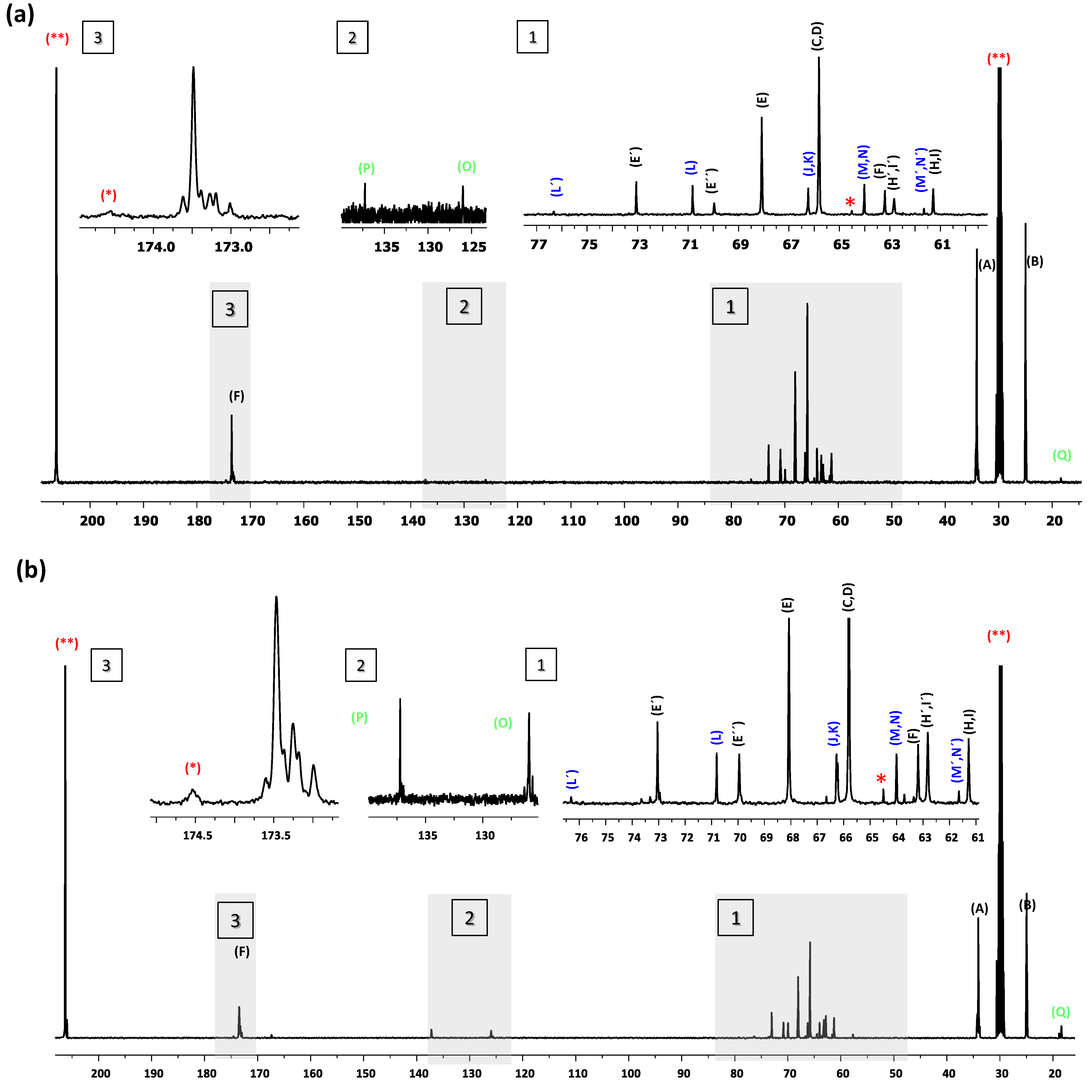
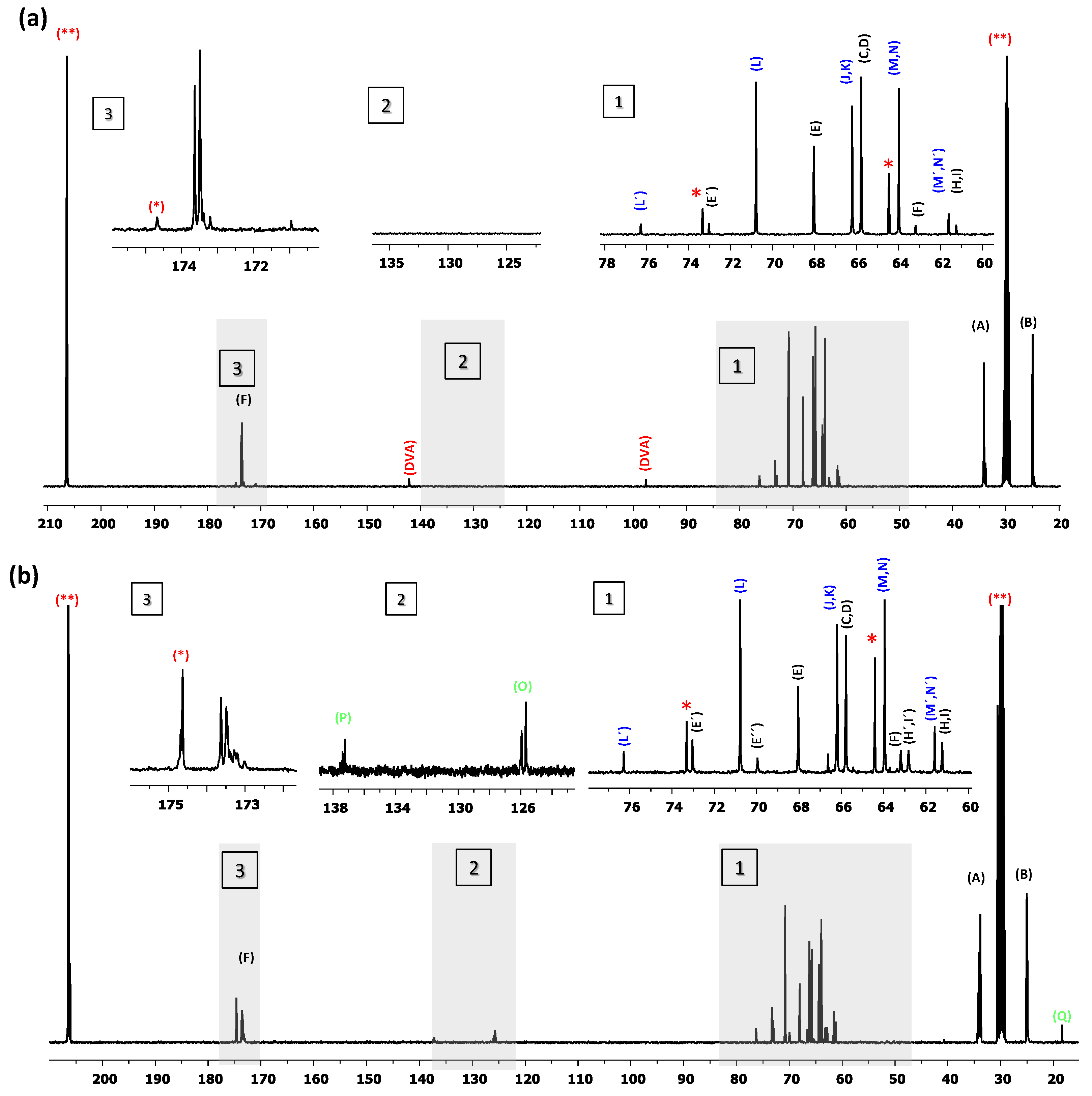
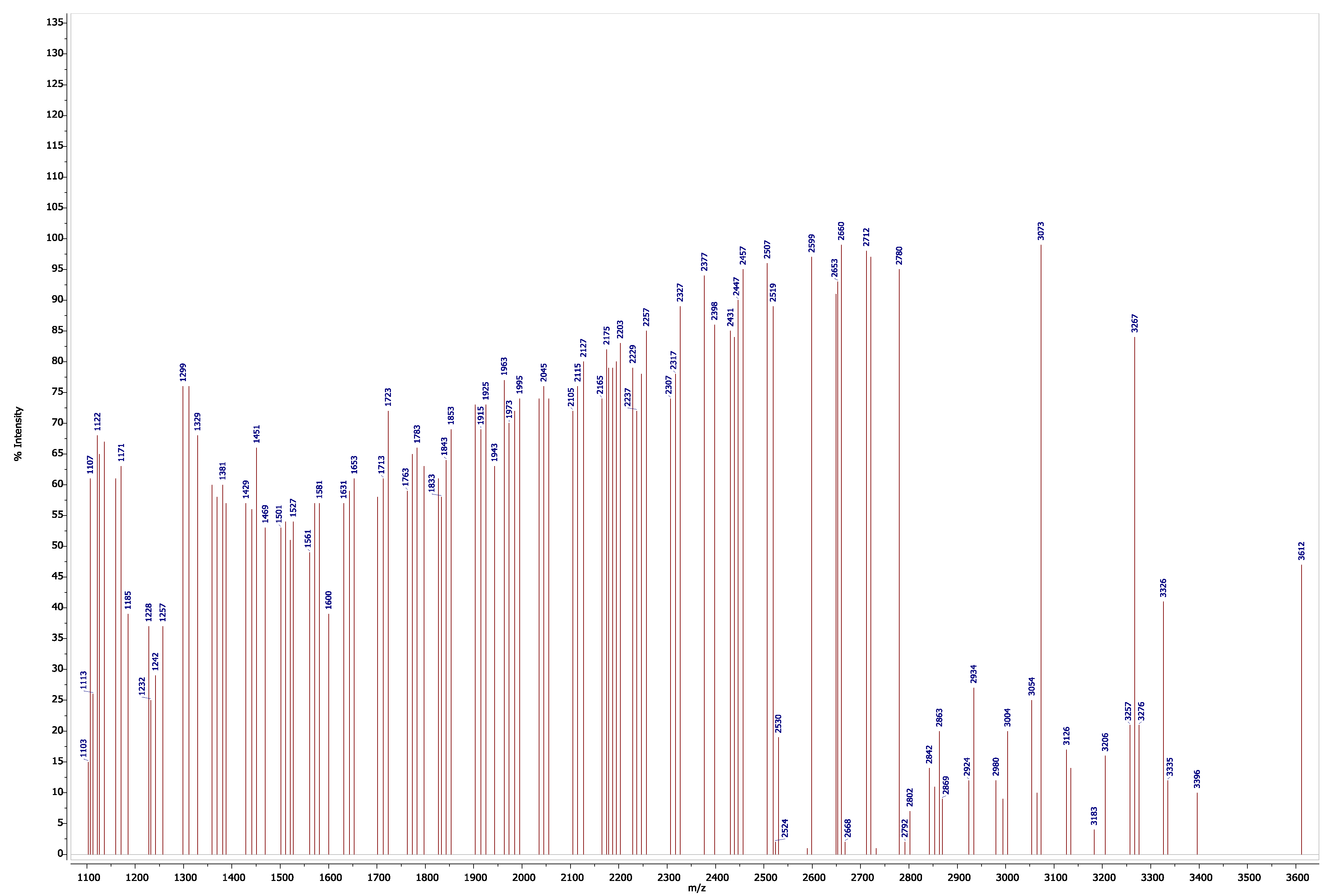

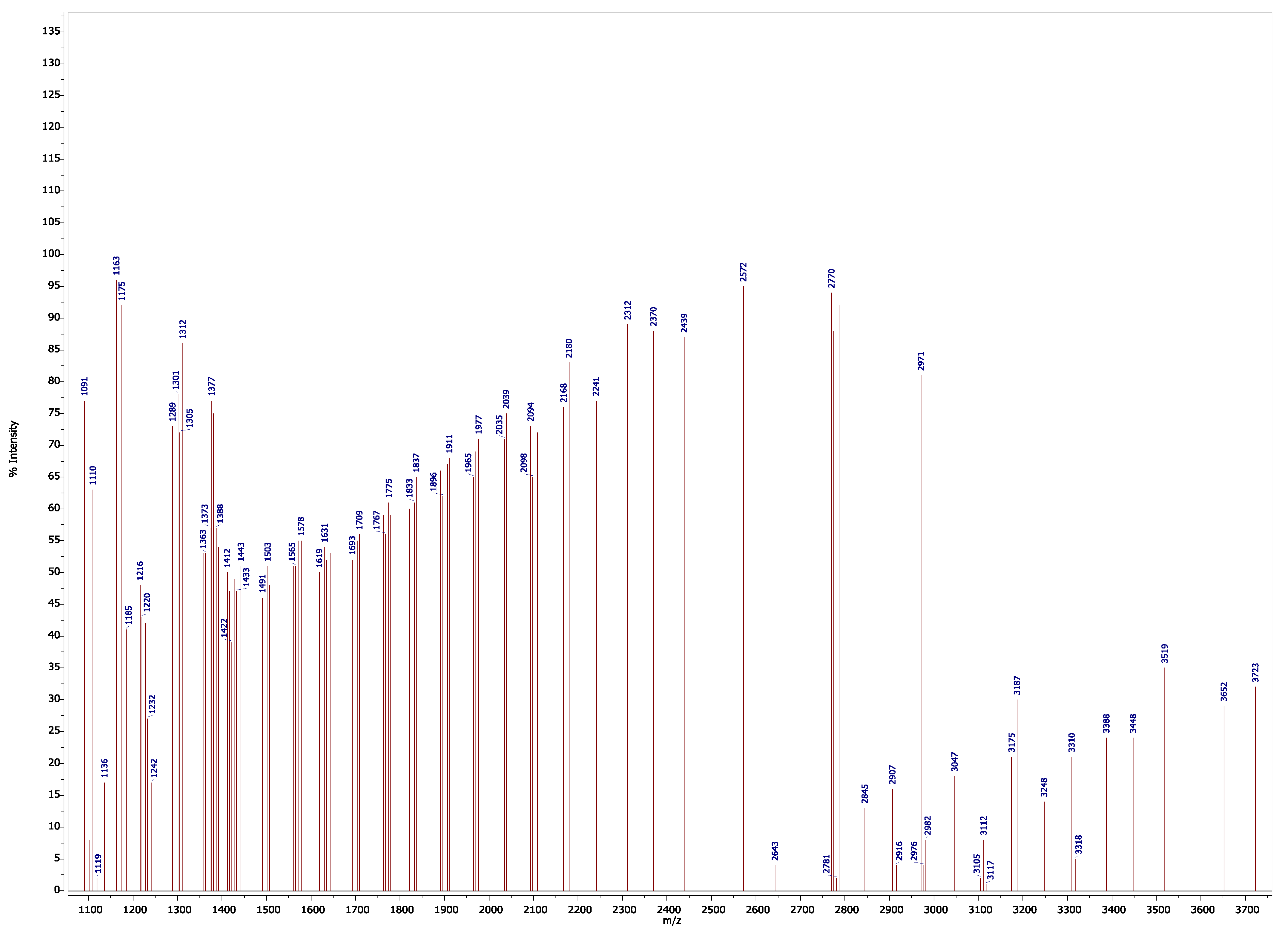
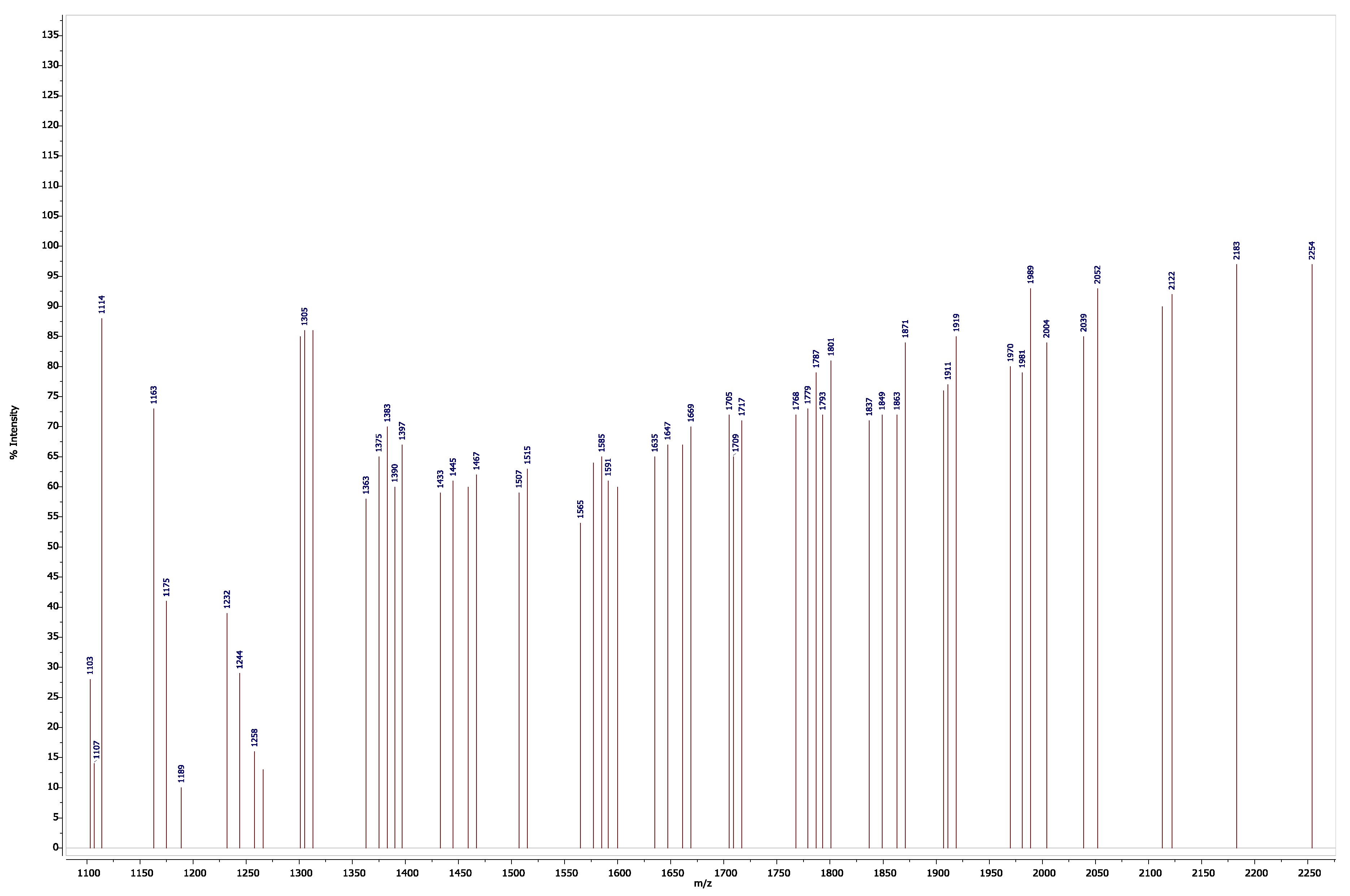
| CALB (wt%) | End Group | Composition (%) | ||
|---|---|---|---|---|
| One-Pot Synthesis Steps | ||||
| 1 Step | 2 Steps | |||
| 1 | ngg | HO-(PGA)-OH | 11.3 | 19.3 |
| nvv | Vinyl-(PGA)-Vinyl | 0.2 | 0.1 | |
| ngv | HO-(PGA)-Vinyl | 4.3 | 0.3 | |
| nga | HO-(PGA)-Acid | 5.8 | 8.7 | |
| naa | Acid-(PGA)-Acid | 6.0 | 16.3 | |
| nva | Vinyl-(PGA)-Acid | 1.7 | 0 | |
| ngg | HO-(PGA)-Met | 9.2 | 4.2 | |
| nvv | Acid-(PGA)-Met | 8.8 | 27.4 | |
| nga | Vinil-(PGA)-Met | 0.2 | 0.1 | |
| naa | Met-(PGA)-Met | 52.5 | 23.6 | |
| 3 | ngg | HO-(PGA)-OH | 9.6 | 19.0 |
| nvv | Vinyl-(PGA)-Vinyl | - | 13.4 | |
| ngv | HO-(PGA)-Vinyl | 3.3 | 6.0 | |
| nga | HO-(PGA)-Acid | 4.6 | 11.6 | |
| naa | Acid-(PGA)-Acid | 13.5 | 2.3 | |
| nva | Vinyl-(PGA)-Acid | - | 10.0 | |
| ngg | HO-(PGA)-Met | - | 13.4 | |
| nvv | Acid-(PGA)-Met | 11.0 | 0 | |
| nga | Vinil-(PGA)-Met | 3.1 | 0 | |
| nva | Met-(PGA)-Met | 54.9 | 24.3 | |
References
- Kobayashi, S. Recent Developments in Lipase-Catalyzed Synthesis of Polyesters. Macromol. Rapid Commun. 2009, 30, 237–266. [Google Scholar] [CrossRef] [PubMed]
- Peeters, J.W.; Palmans, A.R.A.; Meijer, E.W.; Koning, C.E.; Heise, A. Chemoenzymatic Synthesis of Branched Polymers. Macromol. Rapid Commun. 2005, 26, 684–689. [Google Scholar] [CrossRef]
- Okabayashi, R.; Ohta, Y.; Yokozawa, T. Control of Molecular Weight and End-Functional Groups of Polyester from A2 + B2 Polycondensation via Cross-Metathesis of Cyclic Unsaturated Polyester with Difunctional Olefin. Macromolecules 2017, 50, 9589–9597. [Google Scholar] [CrossRef]
- Seo, K.S.; Castano, M.; Casiano, M.; Wesdemiotis, C.; Becker, M.L.; Puskas, J.E. Enzyme-Catalyzed Quantitative Chain-End Functionalization of Poly(Ethylene Glycol)s under Solventless Conditions. RSC Adv. 2014, 4, 1683–1688. [Google Scholar] [CrossRef]
- Alvarez Albarran, A.; Silantyeva, E.; Seo, K.S.; Puskas, J.E. Synthesis of Functionalized Polyisobutylenes Using the Propylene Epoxide/TiCl4 Initiating System. Polym. Chem. 2014, 5, 4710–4714. [Google Scholar] [CrossRef]
- Castano, M.; Seo, K.S.; Guo, K.; Becker, M.L.; Wesdemiotis, C.; Puskas, J.E. Green Polymer Chemistry: Synthesis of Symmetric and Asymmetric Telechelic Ethylene Glycol Oligomers. Polym. Chem. 2015, 6, 1137–1142. [Google Scholar] [CrossRef]
- Eriksson, M.; Hult, K.; Malmström, E.; Johansson, M.; Trey, S.M.; Martinelle, M. One-Pot Enzymatic Polycondensation to Telechelic Methacrylate-Functional Oligoesters Used for Film Formation. Polym. Chem. 2011, 2, 714–719. [Google Scholar] [CrossRef]
- Nameer, S.; Semlitsch, S.; Martinelle, M.; Johansson, M. One-Pot Enzyme-Catalyzed Synthesis of Dual-Functional Polyester Macromers towards Surface-Active Hydrophobic Films. RSC Adv. 2017, 7, 50294–50299. [Google Scholar] [CrossRef] [Green Version]
- Hrsic, E.; Keul, H.; Möller, M. One-Pot Synthesis of Multifunctional Polymers by Light-Controlled Radical Polymerization and Enzymatic Catalysis with Candida antarctica Lipase B. Macromol. Rapid Commun. 2015, 36, 2092–2096. [Google Scholar] [CrossRef]
- Takwa, M.; Simpson, N.; Mcilmsitröm, E.; Hult, K.; Martinelle, M. One-Pot Difunctionalization of Poly(ω-Pentadecalactone) with Thiol-Thiol or Thiol-Acrylate Groups, Catalyzed by Candida antarctica Lipase Ba. Macromol. Rapid Commun. 2006, 27, 1932–1936. [Google Scholar] [CrossRef]
- Qian, X.; Wu, Q.; Xu, F.; Lin, X. Amphiphilic MPEG-Block-Poly (Profen Amide-Co-Esters) Copolymers: One Pot Biocatalytic Synthesis, Self-Assembly in Water and Drug Release. Polymer 2011, 52, 5479–5485. [Google Scholar] [CrossRef]
- Rao, Z.K.; Ni, H.l.; Liu, Y.; Li, Y.; Zhu, H.Y.; Hao, J.Y. Dual Thermo-Responsive Amphiphilic Alternating Copolymers: One-Pot Synthesis and the Temperature-Induced Self-Assembly. J. Mater. Sci. 2020, 55, 10910–10921. [Google Scholar] [CrossRef]
- Hevilla, V.; Sonseca, A.; Echeverría, C.; Muñoz-Bonilla, A.; Fernández-García, M. Enzymatic Synthesis of Polyesters and Their Bioapplications: Recent Advances and Perspectives. Macromol. Biosci. 2021, 21, 2100156. [Google Scholar] [CrossRef] [PubMed]
- Sonseca, A.; El Fray, M. Enzymatic Synthesis of an Electrospinnable Poly(Butylene Succinate-Co-Dilinoleic Succinate) Thermoplastic Elastomer. RSC Adv. 2017, 7, 21258–21267. [Google Scholar] [CrossRef] [Green Version]
- Korupp, C.; Weberskirch, R.; Müller, J.J.; Liese, A.; Hilterhaus, L. Scaleup of Lipase-Catalyzed Polyester Synthesis. Org. Process Res. Dev. 2010, 14, 1118–1124. [Google Scholar] [CrossRef]
- Sonseca, A.; McClain, A.; Puskas, J.E.; El Fray, M. Kinetic Studies of Biocatalyzed Copolyesters of Poly(Butylene Succinate) (PBS) Containing Fully Bio-Based Dilinoleic Diol. Eur. Polym. J. 2019, 116, 515–525. [Google Scholar] [CrossRef]
- Binns, F.; Harffey, P.; Roberts, S.M.; Taylor, A. Studies Leading to the Large Scale Synthesis of Polyesters Using Enzymes. J. Chem. Soc. Perkin Trans. 1 1999, 2671–2676. [Google Scholar] [CrossRef]
- Ding, X.; Chen, Y.; Chao, C.A.; Wu, Y.L.; Wang, Y. Control the Mechanical Properties and Degradation of Poly(Glycerol Sebacate) by Substitution of the Hydroxyl Groups with Palmitates. Macromol. Biosci. 2020, 20, 2000101. [Google Scholar] [CrossRef]
- Kline, B.J.; Beckman, E.J.; Russell, A.J. One-Step Biocatalytic Synthesis of Linear Polyesters with Pendant Hydroxyl Groups. J. Am. Chem. Soc. 1998, 120, 9475–9480. [Google Scholar] [CrossRef]
- De Espinosa, L.M.; Meier, M.A.R.; Ronda, J.C.; Galià, M.; Cádiz, V. Phosphorus-Containing Renewable Polyester-Polyols via ADMET Polymerization: Synthesis, Functionalization, and Radical Crosslinking. J. Polym. Sci. Part A Polym. Chem. 2010, 48, 1649–1660. [Google Scholar] [CrossRef]
- Kallinteri, P.; Higgins, S.; Hutcheon, G.A.; St. Pourçain, C.B.; Garnett, M.C. Novel Functionalized Biodegradable Polymers for Nanoparticle Drug Delivery Systems. Biomacromolecules 2005, 6, 1885–1894. [Google Scholar] [CrossRef] [PubMed]
- Parshad, B.; Kumari, M.; Khatri, V.; Rajeshwari, R.; Pan, Y.; Sharma, A.K.; Ahmed, I. Enzymatic Synthesis of Glycerol, Azido-Glycerol and Azido-Triglycerol Based Amphiphilic Copolymers and Their Relevance as Nanocarriers: A Review. Eur. Polym. J. 2021, 158, 110690. [Google Scholar] [CrossRef]
- Wurm, F.; Dingels, C.; Frey, H.; Klok, H.A. Squaric Acid Mediated Synthesis and Biological Activity of a Library of Linear and Hyperbranched Poly(Glycerol)-Protein Conjugates. Biomacromolecules 2012, 13, 1161–1171. [Google Scholar] [CrossRef] [PubMed]
- Thomas, A.; Müller, S.S.; Frey, H. Beyond Poly(Ethylene Glycol): Linear Polyglycerol as a Multifunctional Polyether for Biomedical and Pharmaceutical Applications. Biomacromolecules 2014, 15, 1935–1954. [Google Scholar] [CrossRef] [PubMed]
- Sonseca, Á.; Hevilla, V.; López, D.; Gimenez, E.; Fernández-García, M. Glycerol-Based Enzymatically Synthesized Renewable Polyesters: Control of Molecular Weight, Degree of Branching and Functional Endgroups. Eur. Polym. J. 2022, 170, 111173. [Google Scholar] [CrossRef]
- Arif, Z.U.; Khalid, M.Y.; Noroozi, R.; Hossain, M.; Shi, H.H.; Tariq, A.; Ramakrishna, S.; Umer, R. Additive manufacturing of sustainable biomaterials for biomedical applications. Asian J. Pharm. Sci. 2023, 18, 100812. [Google Scholar] [CrossRef]
- Ding, R.; Du, Y.; Goncalves, R.B.; Francis, L.F.; Reineke, T.M. Sustainable near UV-curable acrylates based on natural phenolics for stereolithography 3D printing. Polym. Chem. 2019, 10, 1067–1077. [Google Scholar] [CrossRef]
- Dai, L.; Song, J.; Qu, S.; Xiao, R. Triple-shape memory effect in 3D-printed polymers. Express Polym. Lett. 2020, 14, 1116–1126. [Google Scholar] [CrossRef]
- Chen, S.; Wu, Z.; Chu, C.; Ni, Y.; Neisiany, R.E.; You, Z. Biodegradable Elastomers and Gels for Elastic Electronics. Adv. Sci. 2022, 9, 2105146. [Google Scholar] [CrossRef]
- Pashneh-Tala, S.; Owen, R.; Bahmaee, H.; Rekštytė, S.; Malinauskas, M.; Claeyssens, F. Synthesis, Characterization and 3D Micro-Structuring via 2-Photon Polymerization of Poly(glycerol sebacate)-Methacrylate–An Elastomeric Degradable Polymer. Front. Phys. 2018, 6, 41. [Google Scholar] [CrossRef] [Green Version]
- Kirillova, A.; Yeazel, T.R.; Asheghali, D.; Petersen, S.R.; Dort, S.; Gall, K.; Becker, M.L. Fabrication of Biomedical Scaffolds Using Biodegradable Polymers. Chem. Rev. 2021, 121, 11238–11304. [Google Scholar] [CrossRef]
- Momeni, F.; Liu, X.; Ni, J. A Review of 4D Printing. Mater. Des. 2017, 122, 42–79. [Google Scholar] [CrossRef]
- Ifkovits, J.L.; Burdick, J.A. Review: Photopolymerizable and Degradable Biomaterials for Tissue Engineering Applications. Tissue Eng. 2007, 13, 2369–2385. [Google Scholar] [CrossRef]
- Nijst, C.L.E.; Bruggeman, J.P.; Karp, J.M.; Ferreira, L.; Zumbuehl, A.; Bettinger, C.J.; Langer, R. Synthesis and Characterization of Photocurable Elastomers from Poly(Glycerol-Co-Sebacate). Biomacromolecules 2007, 8, 3067–3073. [Google Scholar] [CrossRef] [PubMed]
- Wu, Y.L.; D’Amato, A.R.; Yan, A.M.; Wang, R.Q.; Ding, X.; Wang, Y. Three-Dimensional Printing of Poly(Glycerol Sebacate) Acrylate Scaffolds via Digital Light Processing. ACS Appl. Bio Mater. 2020, 3, 7575–7588. [Google Scholar] [CrossRef] [PubMed]
- Hevilla, V.; Sonseca, A.; Echeverría, C.; Muñoz-Bonilla, A.; Fernández-García, M. Photocuring of Aliphatic-Lineal Poly(Glycerol Adipate) with a Monomer Bearing Thiazolium Groups as a Promising Approach for Biomedical Applications. Eur. Polym. J. 2023, 186, 111875. [Google Scholar] [CrossRef]
- Rabiller, C.; Maze, F. Quantitative Analysis and Determination of the Enantiomeric Purity of Glycerides by 13C NMR Spectroscopy. Application to the Lipase-catalysed Transesterification of Triacylglycerides. Magn. Reson. Chem. 1989, 27, 582–584. [Google Scholar] [CrossRef]
- Wyatt, V.T.; Strahan, G.D. Degree of Branching in Hyperbranched Poly(Glycerol-Co-Diacid)s Synthesized in Toluene. Polymers 2012, 4, 396–407. [Google Scholar] [CrossRef] [Green Version]
- Sunder, A.; Hanselmann, R.; Frey, H.; Mülhaupt, R. Controlled Synthesis of Hyperbranched Polyglycerols by Ring-Opening Multibranching Polymerization. Macromolecules 1999, 32, 4240–4246. [Google Scholar] [CrossRef]
- Kulshrestha, A.S.; Gao, W.; Gross, R.A. Glycerol Copolyesters: Control of Branching and Molecular Weight Using a Lipase Catalyst. Macromolecules 2005, 38, 3193–3204. [Google Scholar] [CrossRef]

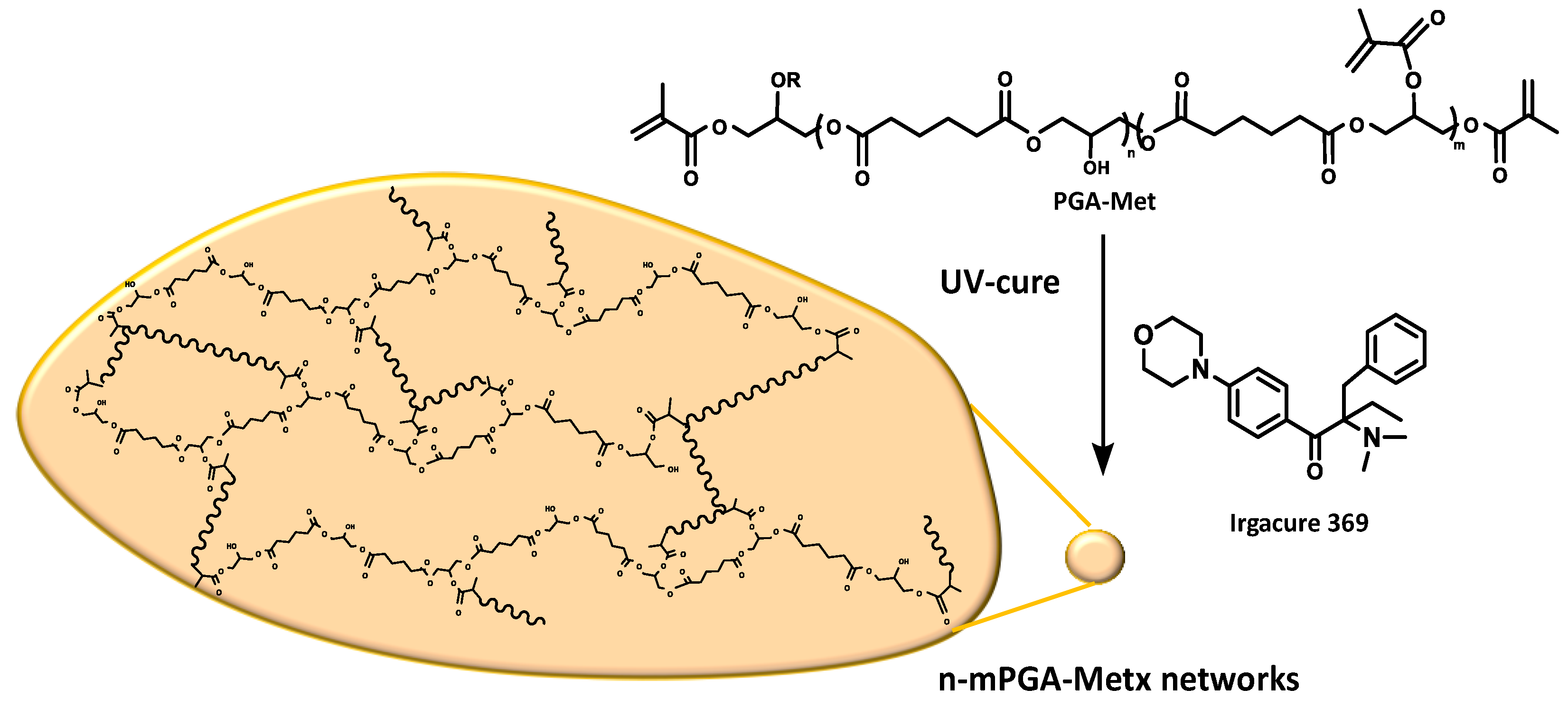
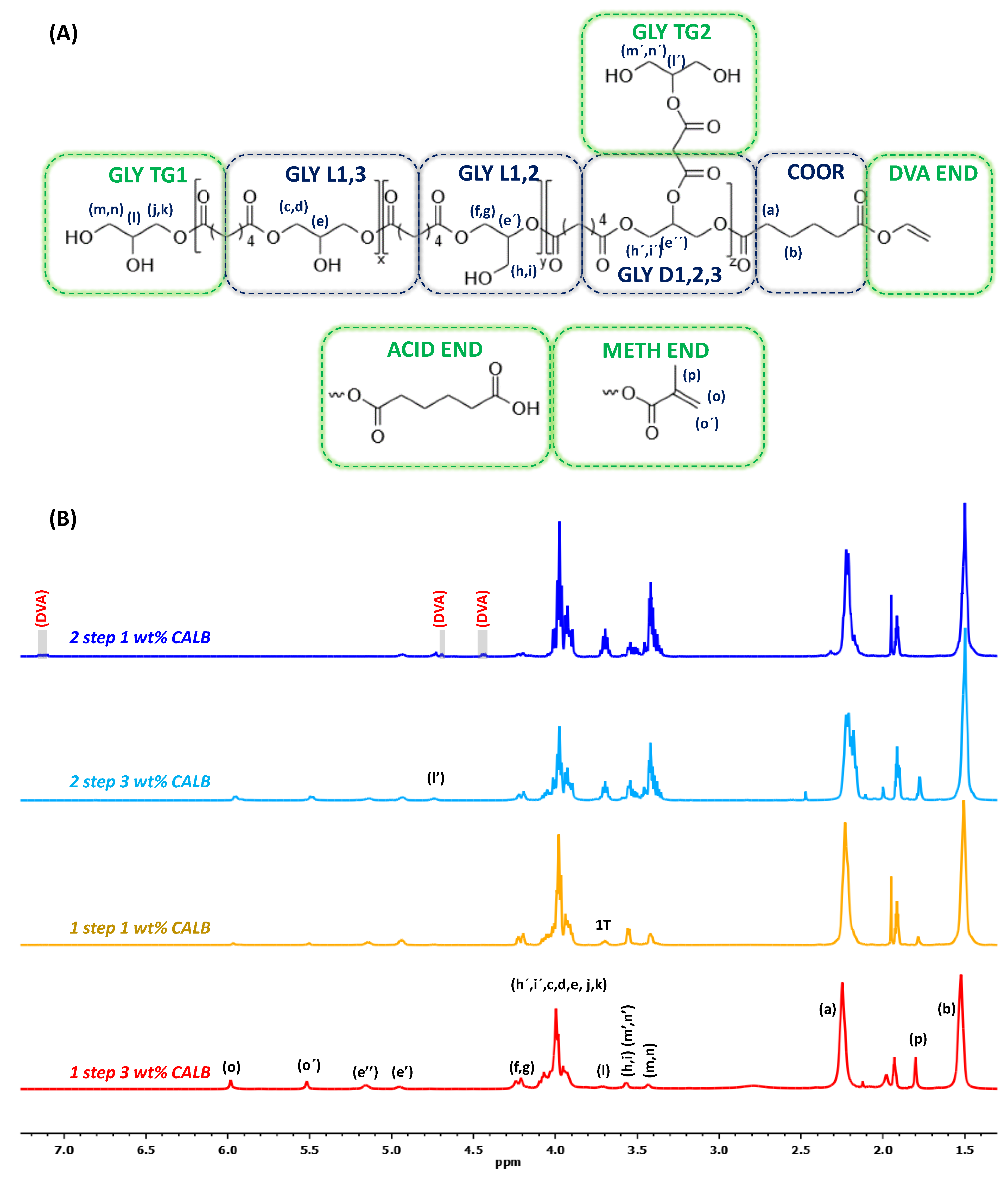
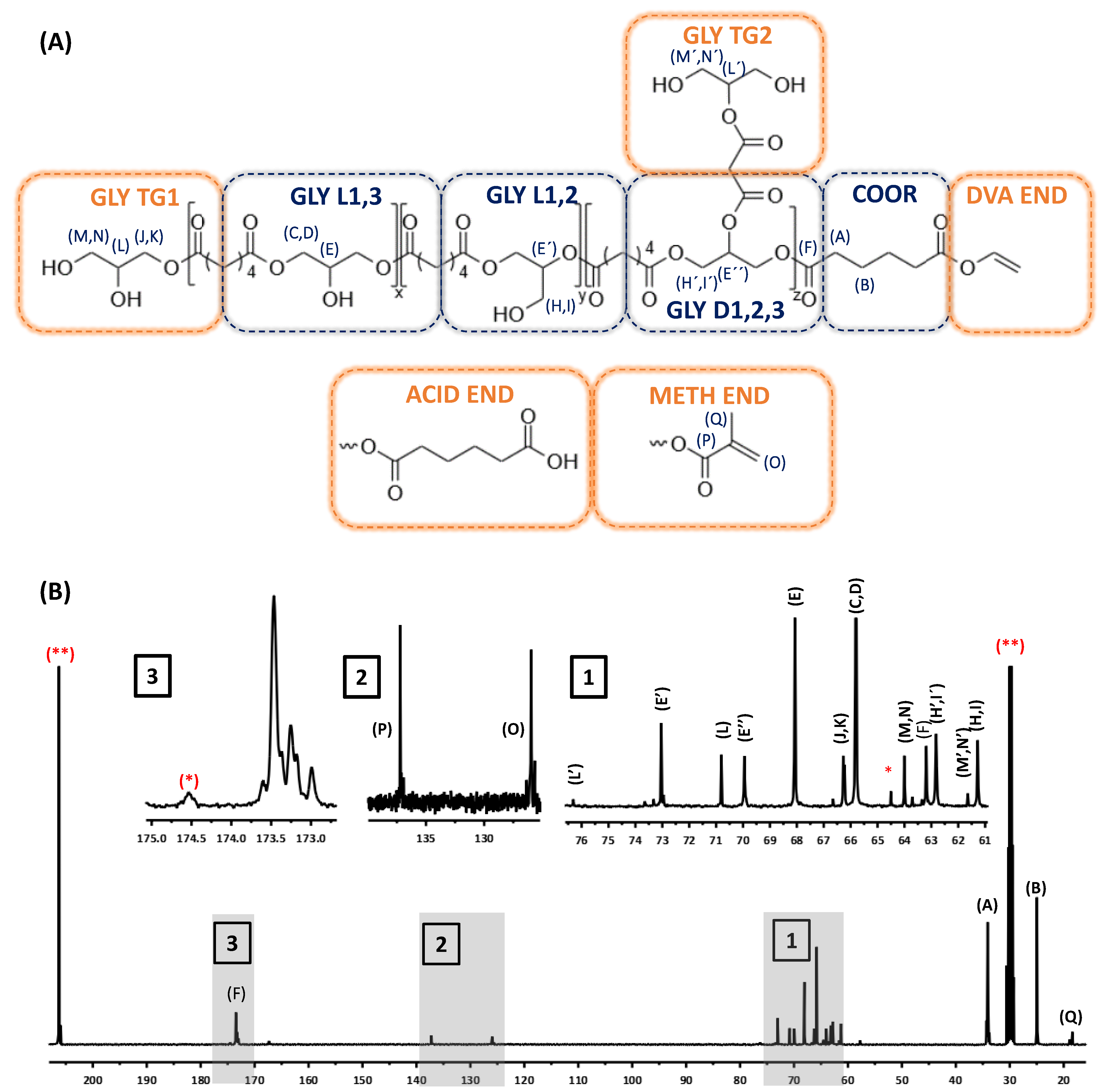

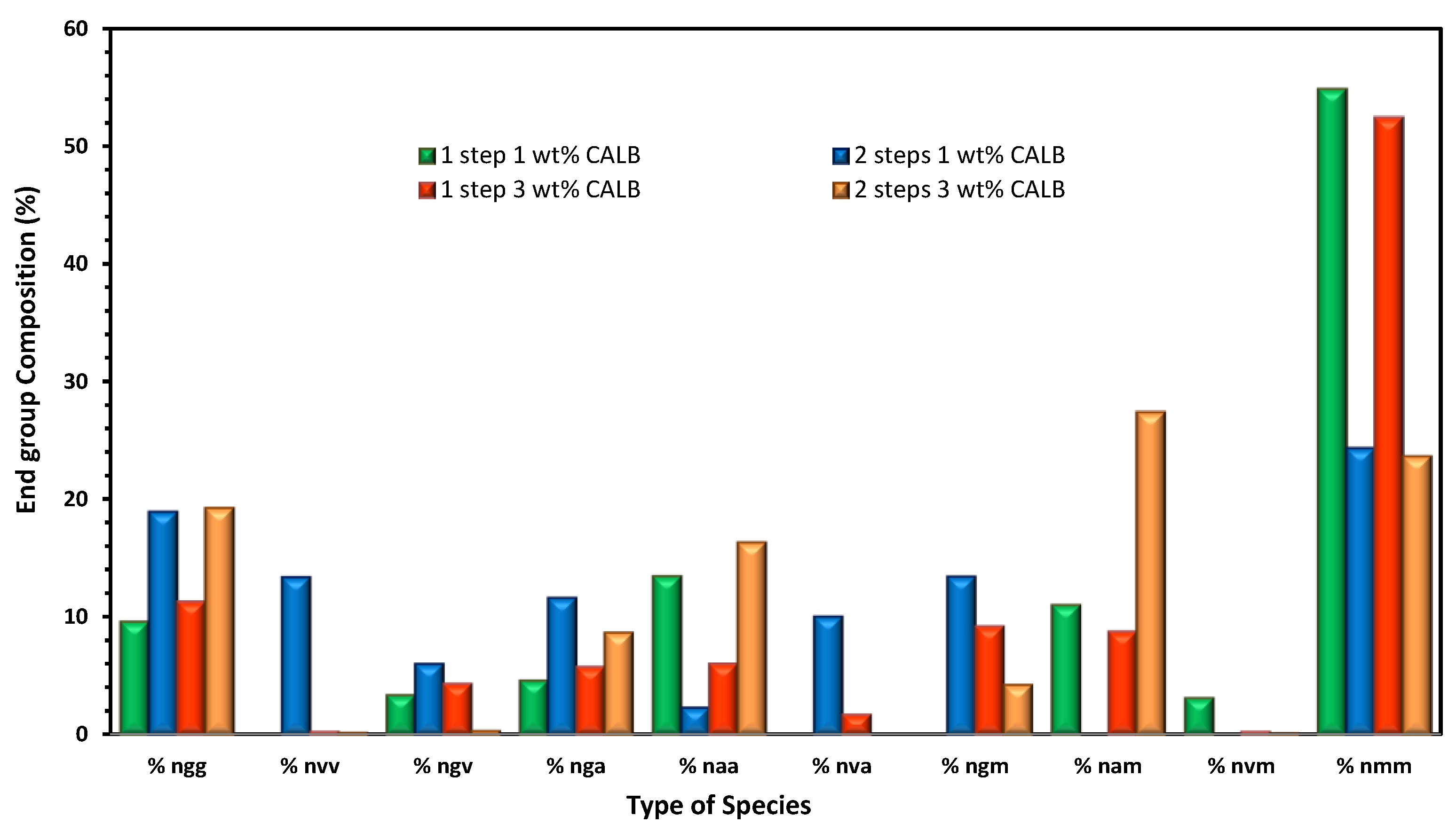
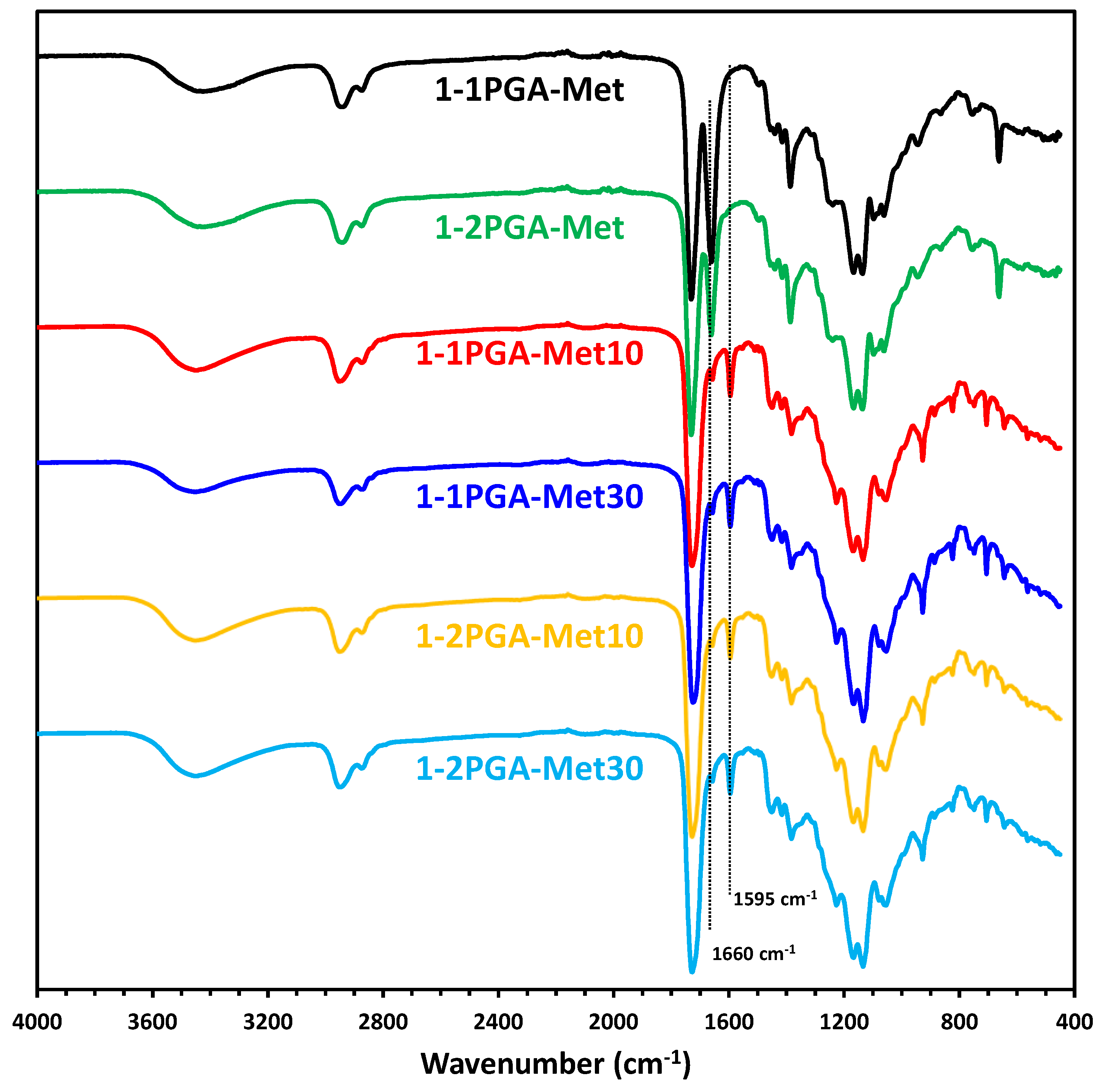
| Synthesis Procedure (Steps) | CALB (wt%) | Mw, SEC (g/mol) | Mn, SEC (g/mol) | ÐSEC Mw/Mn | Yield (%) |
|---|---|---|---|---|---|
| 2 steps | 1 | 1220 | 1150 | 1.1 | 61.9 |
| 2 steps | 3 | 2090 | 1890 | 1.1 | 66.8 |
| 1 step | 1 | 12,100 | 7450 | 1.6 | 58.7 |
| 1 step | 3 | 13,600 | 7900 | 1.7 | 46.4 |
| Synthesis Procedure | CALB (wt%) | Glycerol Structural Unit Relative Abundance (%) | End Group Relative Abundance (%) | Regioselectivity (%) | DB (%) | ||||||
|---|---|---|---|---|---|---|---|---|---|---|---|
| TG (1-sub.) | TG2 (2-sub.) | L1,3 (1,3-sub.) | L1,2 (1,2-disub.) | D (1,2,3-sub.) | GLY | VMA | DVA | ||||
| 2 steps | 1 | 45.5 | 7.4 | 42.4 | 4.7 | -- | 95.1 | -- | 4.9 | 91.8 | -- |
| 2 steps | 3 | 38.8 | 8.5 | 34.6 | 6.3 | 11.7 | 80.8 | 19.2 | -- | 83.8 | 0.4 |
| 1 step | 1 | 11.8 | 1.1 | 63.1 | 15.2 | 8.8 | 81.1 | 18.9 | -- | 87.2 | 0.2 |
| 1 step | 3 | 10.1 | -- | 65.2 | 8.8 | 16.0 | 38.4 | 61.6 | -- | 88.0 | 0.3 |
| Synthesis Procedure | CALB (wt%) | End Group Relative Abundance (%) MALDI-TOF-MS | End Group Relative Abundance (%) 1H NMR | |||||
|---|---|---|---|---|---|---|---|---|
| GLY | VMA | DVA | AC | GLY | VMA | DVA | ||
| 2 steps | 1 | 57.0 | 23.8 | 11.8 | 7.4 | 95.1 | -- | 4.9 |
| 2 steps | 3 | 29.8 | 30.6 | 1.4 | 38.2 | 80.8 | 19.2 | -- |
| 1 step | 1 | 15.2 | 53.1 | 9.5 | 22.2 | 81.1 | 18.9 | -- |
| 1 step | 3 | 21.4 | 52.0 | 8.8 | 17.8 | 38.4 | 61.6 | -- |
| Network | UV Light Exposure Time (min) | 1st Heating Tg (°C) | 2nd Heating Tg (°C) |
|---|---|---|---|
| 1-2PGA-Met10 | 10 | −50 | −41 |
| 1-2PGA-Met30 | 30 | −52 | −44 |
| 1-1PGA-Met10 | 10 | −28 | −20 |
| 1-1PGA-Met30 | 30 | −29 | −20 |
Disclaimer/Publisher’s Note: The statements, opinions and data contained in all publications are solely those of the individual author(s) and contributor(s) and not of MDPI and/or the editor(s). MDPI and/or the editor(s) disclaim responsibility for any injury to people or property resulting from any ideas, methods, instructions or products referred to in the content. |
© 2023 by the authors. Licensee MDPI, Basel, Switzerland. This article is an open access article distributed under the terms and conditions of the Creative Commons Attribution (CC BY) license (https://creativecommons.org/licenses/by/4.0/).
Share and Cite
Hevilla, V.; Sonseca, Á.; Fernández-García, M. Straightforward Enzymatic Methacrylation of Poly(Glycerol Adipate) for Potential Applications as UV Curing Systems. Polymers 2023, 15, 3050. https://doi.org/10.3390/polym15143050
Hevilla V, Sonseca Á, Fernández-García M. Straightforward Enzymatic Methacrylation of Poly(Glycerol Adipate) for Potential Applications as UV Curing Systems. Polymers. 2023; 15(14):3050. https://doi.org/10.3390/polym15143050
Chicago/Turabian StyleHevilla, Víctor, Águeda Sonseca, and Marta Fernández-García. 2023. "Straightforward Enzymatic Methacrylation of Poly(Glycerol Adipate) for Potential Applications as UV Curing Systems" Polymers 15, no. 14: 3050. https://doi.org/10.3390/polym15143050





